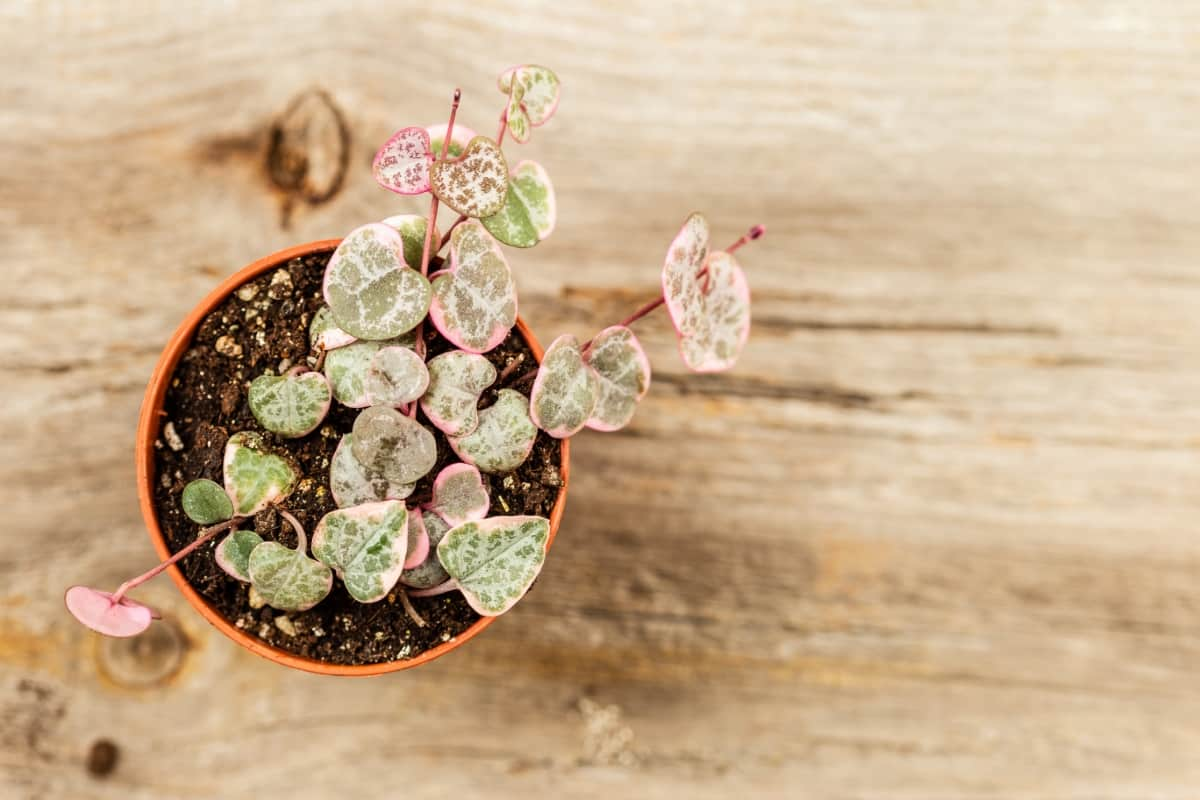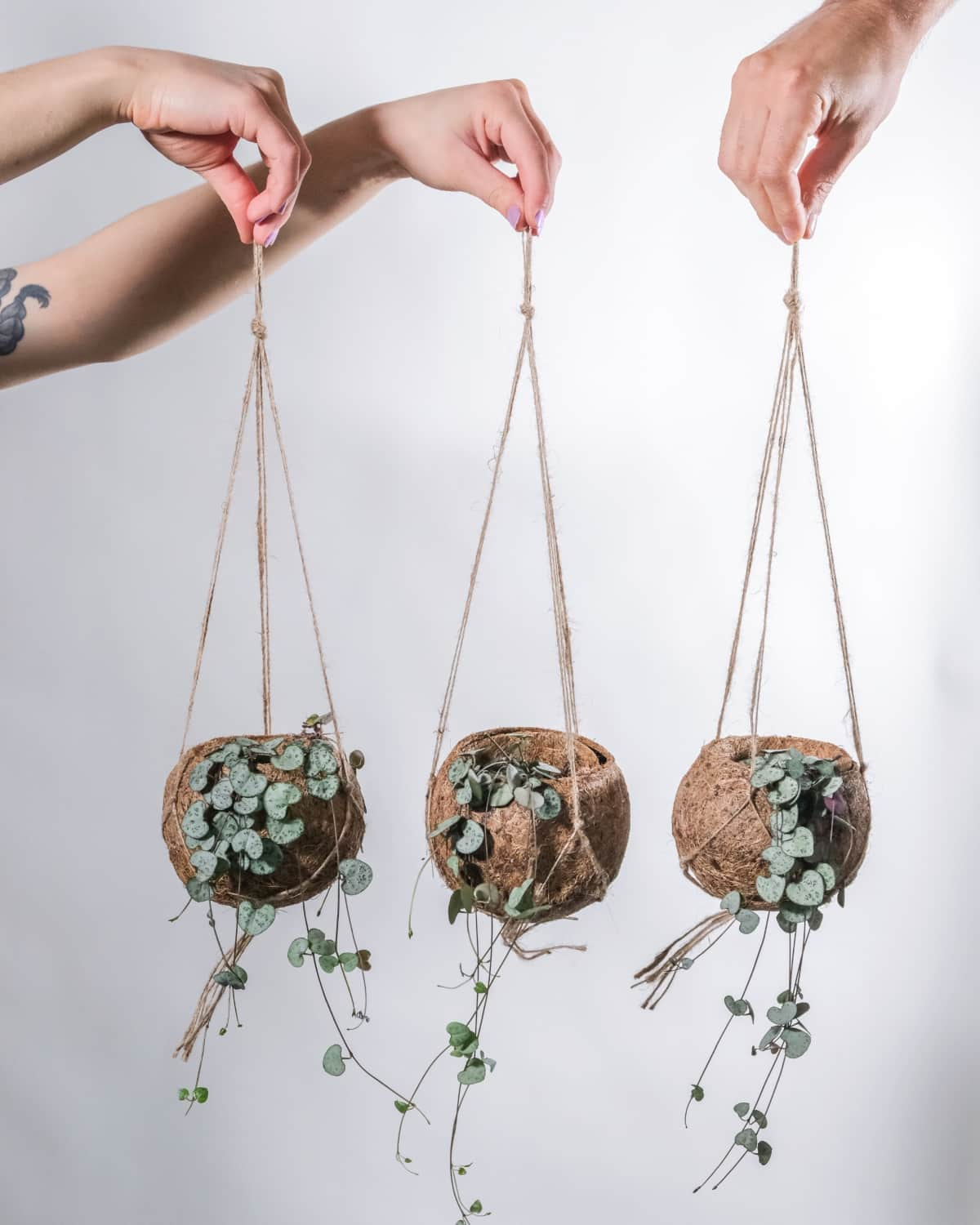String of Hearts, scientifically known as Ceropegia woodii, is a popular trailing succulent plant with heart-shaped leaves. Its delicate vines and unique foliage make it a favorite among plant enthusiasts. How to propagate a string of hearts? If you want to expand your collection or share this beautiful plant with others, propagating String of Hearts can be done through various methods such as cuttings, division through water, and division through the soil. This article will explore each of these propagation techniques in detail.

Understanding the String of Hearts Plant
A string of Hearts is named after its distinctive heart-shaped leaves that grow along long, slender stems. It is often grown as a hanging plant, as its vines reach 4 meters long. The String of Hearts plant is easy to care for, making it a favorite among beginner and experienced gardeners.
It thrives in bright, indirect light and grows well in well-draining soil. Water your String of Hearts sparingly, and wait until the soil dries out between waterings to avoid root rot. In addition to its charming appearance, the String of Hearts plant also has air-purifying properties. It helps to remove toxins from the air, making it a great choice for indoor spaces.
Instructions for Propagating String of Hearts: From Cuttings to Rooting
- Select healthy vines: Choose long, healthy vines from your existing String of Hearts plant for propagation. Look for vines that are not damaged or diseased.
- Prepare the cuttings: Where to cut the String of hearts for propagation? Using clean and sharp pruning scissors, cut the selected vines into 4-6 inch sections. Each cutting should have at least 3-4 leaves.
- Remove lower leaves: The leaves should be removed from the bottom portion of each cutting. This will expose the nodes, the points where roots will develop.
- Allow cuttings to callus: Place the cuttings in a warm, dry location and allow the cut ends to callus for about 24 hours. This will help prevent rotting when they are planted.
- Plant the cuttings: Fill a small pot with well-draining soil. Make a hole in the soil using your finger or a pencil, and insert the cut end of each cutting into the hole gently, ensuring the nodes are covered with soil.
- Provide proper conditions: Place the potted cuttings in a bright location with indirect sunlight. Water the cuttings lightly, keeping the soil slightly moist but not overly wet.
- Monitor and care for the cuttings: Keep an eye on the soil’s moisture level and adjust watering as needed. Mist the cuttings occasionally to create a humid environment. Avoid direct sunlight, as it scorches the delicate leaves. Within a few weeks, you should see roots forming at the nodes.
- Transplant the rooted cuttings: Once they have developed healthy roots, they can be transplanted into individual pots or containers with well-draining soil. Treat them as mature plants and continue to provide appropriate care.
Different Propagation Methods for String of Hearts: Water Propagation, Soil Propagation, and Division
How to propagate the String of hearts in water? Water propagation involves placing cuttings in water until roots develop. Water propagation allows for easy monitoring of root development but can be prone to rot. How to propagate a String of hearts in soil? Soil propagation requires planting the cuttings directly into well-draining soil.
In case you missed it: Jade Plant Propagation: From Stem Cuttings, Leaf Cuttings, Division, and Offsets

Soil propagation provides a more natural transition for the cuttings but requires careful watering. The division of plants involves dividing them into smaller sections and planting them individually. As a result of division, plants grow faster, but they can also become smaller. You should choose the gardening method that meets your preferences and skill level.
The Importance of Choosing Healthy Mother Plants for Successful String of Hearts Propagation
- Healthy mother plants ensure the production of high-quality cuttings, leading to successful growth and development.
- Inspect mother plants for any signs of disease, pests, or nutrient deficiencies when selecting them.
- Healthy plants will have vibrant foliage, firm stems, and well-established root systems.
- It is also essential to consider the overall health of the mother plant, as this will directly impact the strength and vitality of the new plants.
Light, Temperature, and Humidity Requirements for String of Hearts Propagation
Regarding light requirements, String of Hearts thrives in bright, indirect light. Place your String of Hearts plant near a window with filtered sunlight or use artificial grow lights to provide the necessary light intensity. Regarding temperature, String of Hearts prefers a moderately warm environment.
Ideally, the temperature should range between 15°C and 26°C. Avoid exposing the plant to extreme temperatures, which can cause stress and hinder growth. Humidity is another important consideration for String of Hearts propagation. The ideal humidity for the String of Hearts plant is about 40 to 50%.
Essential Tools and Materials for Propagating String of Hearts: A Detailed Checklist
- Healthy String of Hearts plant: You should start by taking cuttings from a healthy mother plant.
- Pruning shears: To make clean cuts when taking cuttings from the mother plant, use sharp pruning shears.
- Clean, sharp knife: A clean and sharp knife is necessary for dividing tubers or rhizomes.
- Well-draining soil mix: Use a combination of potting soil, sand, and perlite to create your own well-draining soil mix.
- Small pots or containers: Choose small ones with drainage holes to plant your cuttings.
- Rooting hormone: Apply rooting hormone to the cut ends of the cuttings to promote root development.
- Plastic bag or propagating dome: Cover the cuttings with a plastic bag or a propagating dome to create a humid environment.
- Water mister: Use a water mister to provide moisture to the cuttings without overwatering them.
- Grow lights or bright indirect light: To ensure the cuttings grow properly, place them in an area with bright indirect light or use grow lights.
In case you missed it: ZZ Plant Propagation (zamioculcas Zamiifolia): From Leaf Cuttings, Stem Cuttings, Division, and in Water

String of Hearts Problems to Avoid when Propagating String of Hearts
String of Hearts prefers well-draining soil with good airflow. Using heavy, compact soil can lead to root rot and hinder the growth of new roots. Instead, use a well-draining mix with perlite or sand to improve drainage. Furthermore, many people neglect to provide sufficient light for their propagated String of Hearts.
This plant thrives in bright, indirect light. Placing your cuttings near a south-facing window or using grow lights can ensure they receive the necessary light for growth. Lastly, failure to provide the right temperature and humidity conditions can hinder propagation success. String of Hearts prefers temperatures between 15-26°C and humidity levels of around 40-50%. Avoid exposing the cuttings to extreme temperature fluctuations or excessively dry air.
Understanding the Growth Cycle of String of Hearts: Timing the Propagation Process
The best time to propagate the String of Hearts is spring or summer when the plant is actively growing. During this time, the plant produces long, trailing stems with small tubers or nodes along the length. These tubers are crucial for propagation as they contain the plant’s genetic material.
To propagate the String of Hearts, take a stem cutting with at least two to three tubers and place it in a well-draining potting mix. Ensure the cutting is kept in a warm, bright location, but do not expose it to direct sunlight. Within a few weeks, new roots will emerge, indicating successful propagation.
Enhancing Success Rates in String of Hearts Propagation
How to make String of Hearts fuller? Firstly, selecting healthy parent plants is crucial. Look for plants with vigorous growth and no signs of disease or pest infestation. Healthy parent plants will produce strong and viable cuttings, increasing the chances of successful propagation. Secondly, Avoid placing the cuttings in direct sunlight, leading to leaf burn. Maintaining a consistent temperature between 15-26°C and moderate humidity levels will promote root development and overall plant health.
In case you missed it: How to Propagate Peperomia: From Leaf Cuttings, Stem Cuttings, Divisions, and in the Water

Thirdly, using the correct propagation technique is vital. One effective method is water propagation, where cuttings are placed in a jar of water until roots develop. Another technique is soil propagation, where cuttings are planted directly into a well-draining potting mix. Whichever method you choose, ensure that the cuttings have at least two nodes, as this is where roots will emerge.
Conclusion
With these instructions, you will be able to propagate String of Hearts successfully from cuttings to rhizomes, expanding your collection of these stunning and trailing plants.
- Feed Your Flock for Less: Top 10 Tips to Save on Chicken Feed
- Ultimate Guide to Ossabaw Island Hog: Breeding, Raising, Diet, and Care
- Hatching Answers: The Top 10 Reasons Your Chickens Aren’t Laying Eggs
- Eggs and Economics: Breaking Down the Cost of Raising Backyard Chickens
- Defend Your Greens: Proven Methods to Keep Iguanas Out of Your Garden
- Ultimate Guide to Cinnamon Queen Chicken: A Comprehensive Guide for Beginners
- Ultimate Guide to California Tan Chicken: Breeding, Raising, Diet, Egg-Production and Care
- Ultimate Guide to Marsh Daisy Chicken: Breeding, Raising, Diet, and Care
- 10 Types of Chicken Farming Businesses You Can Start for Profits